Aston Martin DB12: First look at glam new British super tourer

What car will 007 drive when he next screeches onto our screens? This one, probably. The 26th instalment of the James Bond franchise isn’t due until 2025, but don’t be surprised if MI6’s finest rocks up in an Aston Martin DB12.
Let’s hope so, because the new DB12 certainly looks the part. With a 680hp twin-turbo V8 under its bulging bonnet, it could also lay waste to a few trigger-happy henchmen on a perilous mountain road.
Aston Martin says this is ‘the world’s first super tourer‘ and the start of a new era for the esteemed yet embattled British brand. We’ll be driving the DB12 later this month – on perilous mountain roads, no less. Until then, here is everything you need to know.
Licence to thrill
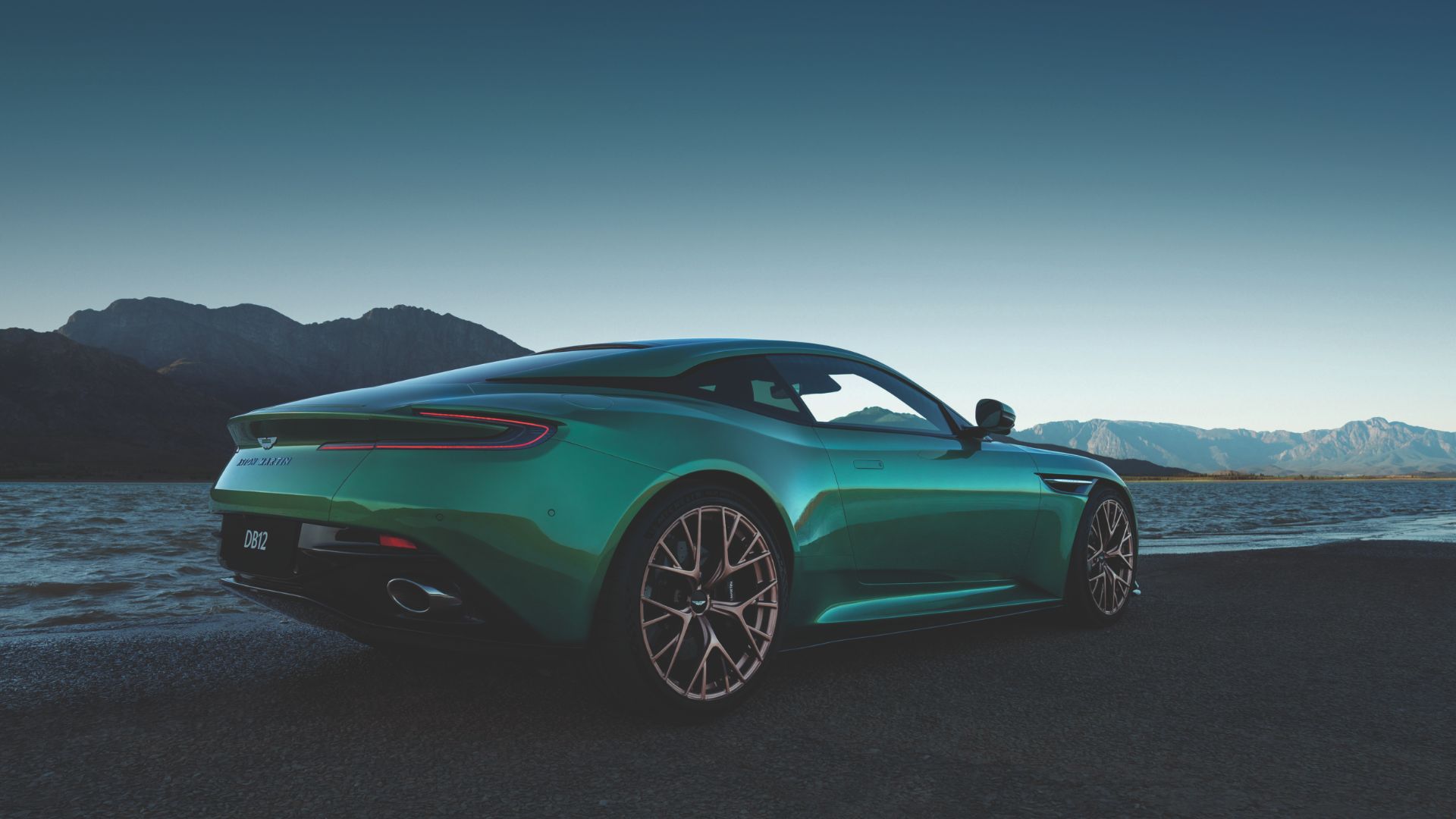
The heart of the DB12 is a reworked version of Aston Martin’s proven 4.0-litre twin-turbo V8. Larger turbochargers, new cam profiles and improved cooling result in 680hp at 6,000rpm, alongside a brawny 561lb ft of torque from 2,750rpm (the outgoing DB11 V8, for comparison, mustered 535hp and 513lb ft).
With a dry weight of 1,685kg – reckon on close to 1,800kg with fluids – that’s enough to propel the DB12 to 62mph in 3.6 seconds and a top speed of 202mph. Chief engineer Roberto Fedeli promises an “exciting soundtrack” from the switchable exhaust, too.
Power reaches the rear wheels via an eight-speed automatic transmission. There’s no old-school manual alternative, but you can take control via paddles behind the steering wheel. Brakes are iron discs or optional carbon-ceramics – the latter saving 27kg in unsprung weight – while the bespoke Michelin Pilot Sport 5S tyres were developed specifically for the DB12.
What goes on tour…
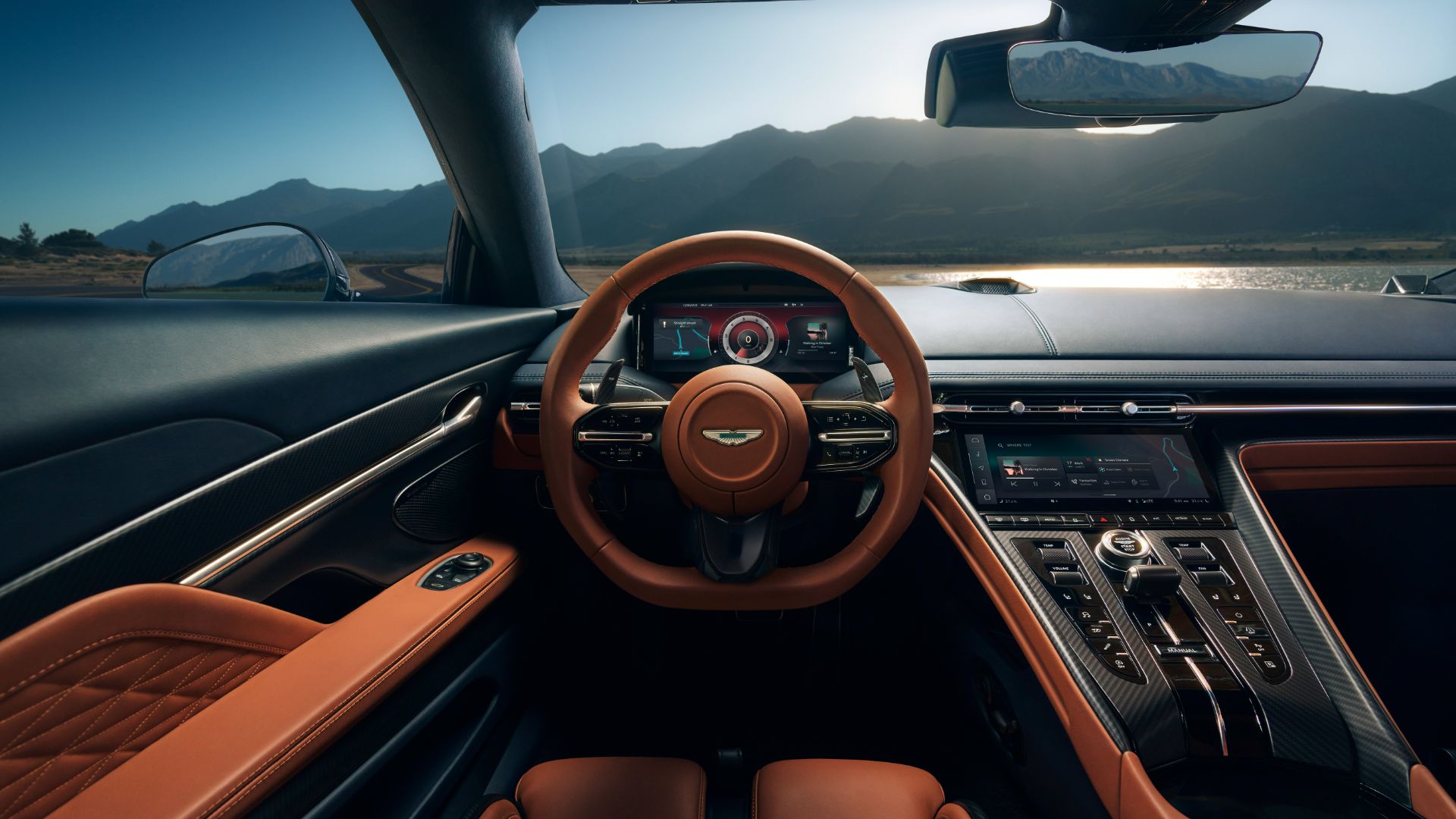
Whether you call it a ‘super tourer’ or a supercar, the DB12 remains a GT in the traditional sense: a car built for long European road trips – or revisiting your childhood home in the Scottish Highlands, perhaps?
The default GT drive mode, selected via a knurled controller on the centre console, is said to offer ‘a luxurious ride quality… for sublime yet agile cruising’. Switching to Sport or Sport+ ramps up the intensity, plus there’s a new Wet mode tailor-made for British weather.
This is also the first DB model with an electronic rear differential. Unlike a mechanical diff, it can switch from open to fully locked in milliseconds, helping to enhance turn-in and improve stability at speed. Where conditions allow, it should also help the DB12 go sideways…
‘The sharpest DB ever’
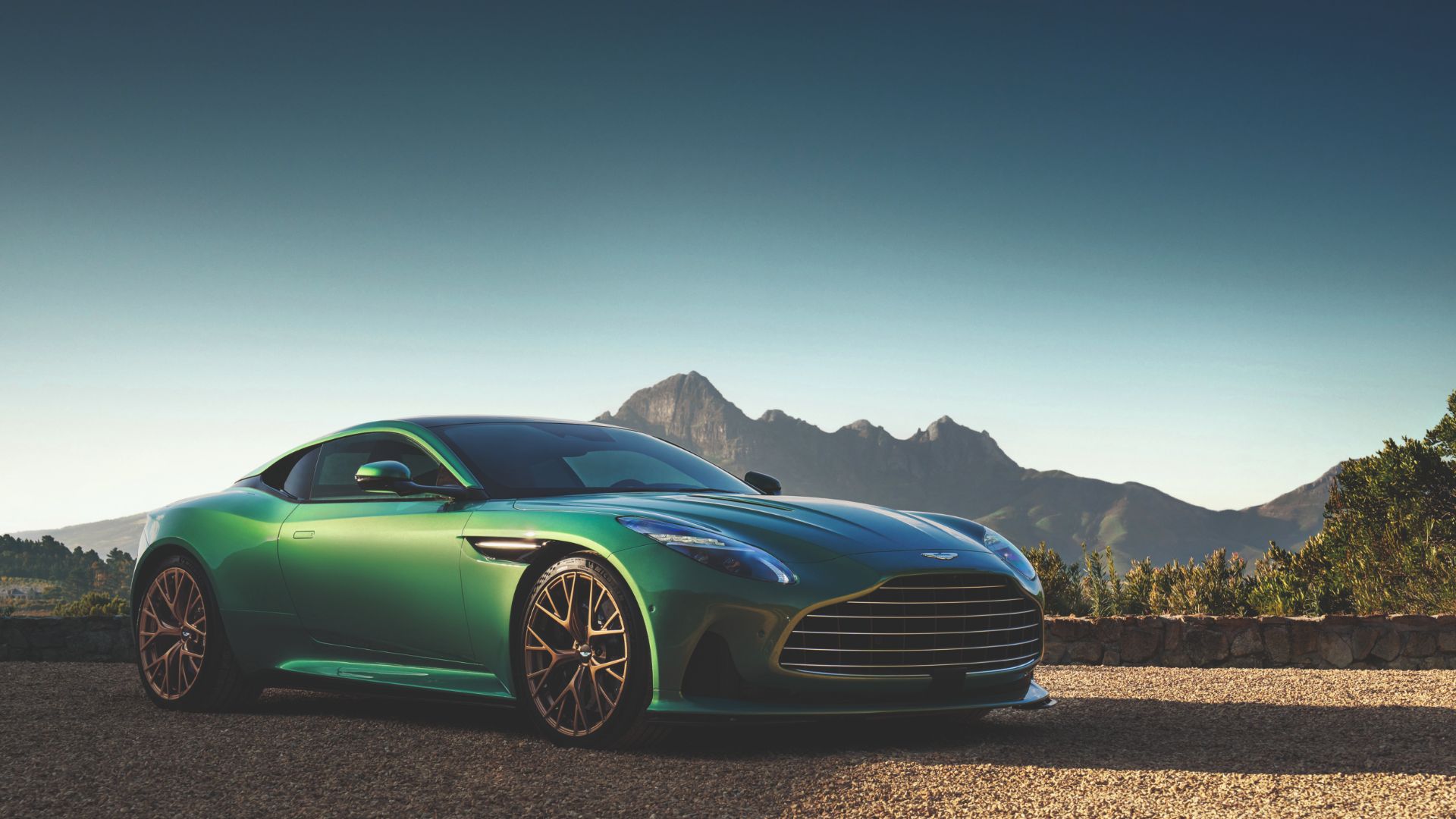
That brings us to the sportier side of the DB12’s character. Aston Martin promises ‘the sharpest DB ever’ along with ‘class-leading driving dynamics’. When your rivals include the McLaren Artura and Maserati MC20, that’s a bold claim.
The car’s bonded aluminium structure is seven percent stiffer than a DB11 and its non-isolated steering column is said to offer improved feedback. We recently tried a similar setup on the run-out Aston Martin DBS 770 Ultimate and were genuinely wowed by how alert and focused it felt.
Drivers can choose from four settings for the stability control: Wet, On, Track and Off. The system relies on numerous sensors around the car, including a new six-axis inertia unit, and is calibrated to work in the background, intervening as unobtrusively as possible.
As seen on screens
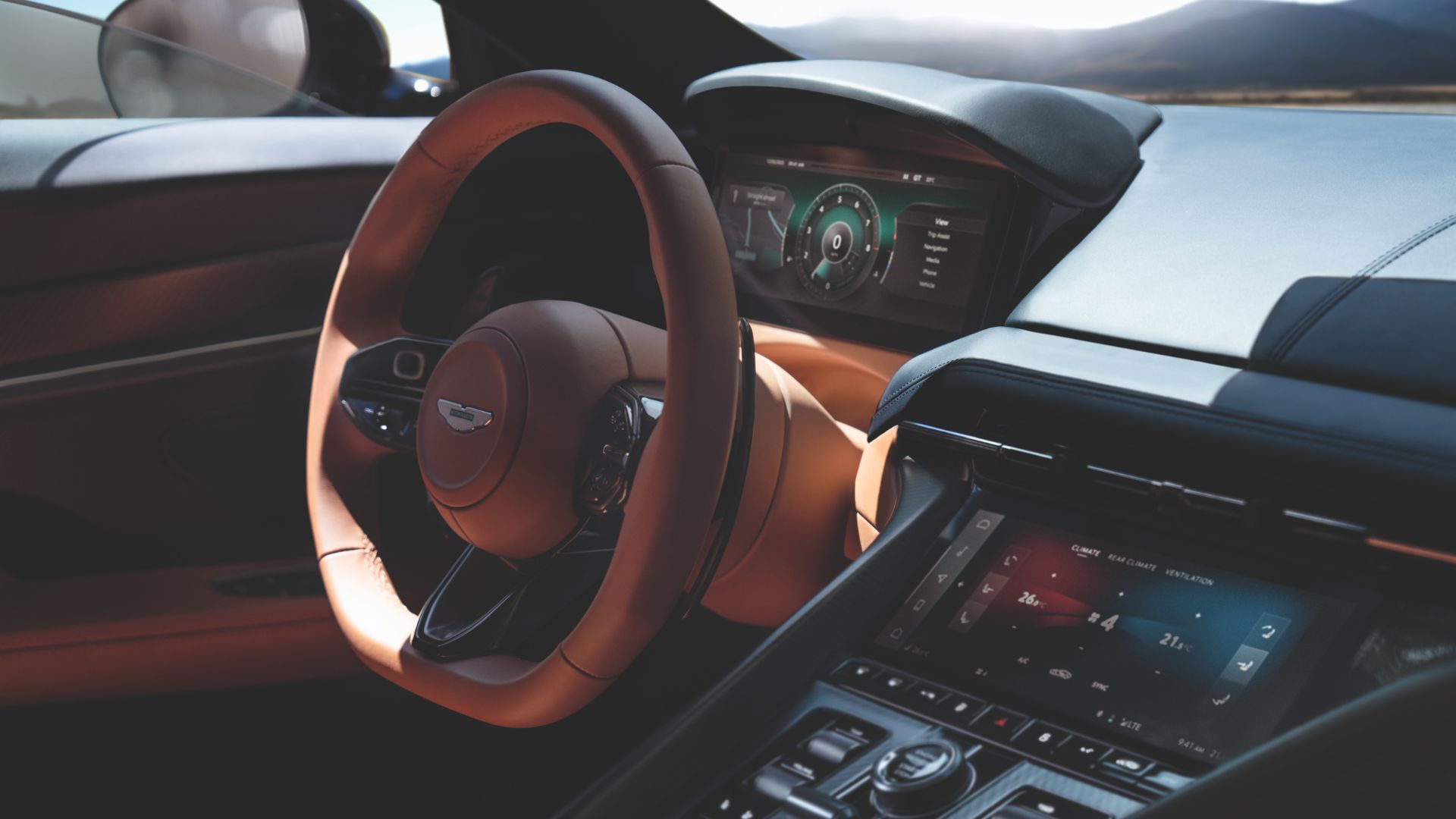
If one aspect of the DB11 cried out for an update, it was the interior. Thankfully, its successor boasts an entirely new cabin that banishes the ancient Mercedes-Benz media system for good.
This time, Aston Martin has developed its own in-house infotainment, with two 10.25-inch screens, 3D navigation, online connectivity – including over-the-air software updates – and a dedicated smartphone app. You can also link up your phone via Apple CarPlay or Android Auto.
The driver and front passenger are cocooned by a high centre console with a mixture of analogue switches and digital controls. Buyers can pick from hand-stitched leather or Alcantara upholstery, plus endless options for personalisation via Aston Martin’s ‘Q’ division. The DB12’s surround-sound audio system comes from Bowers and Wilkins, the British company that also supplies McLaren.
DB12 gives you wings
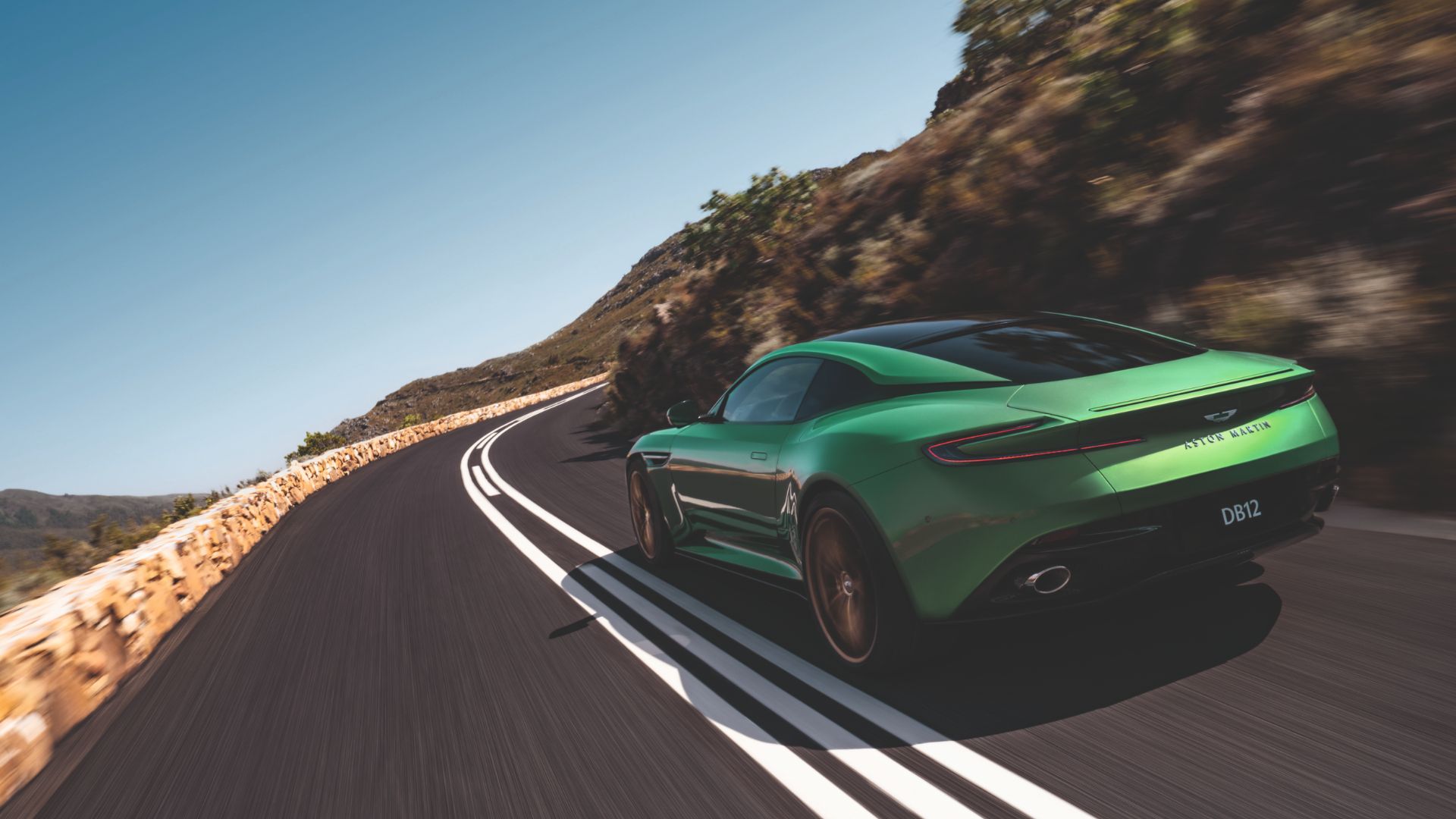
Lastly, there’s how it looks. The DB12 is clearly part of a bloodline that began with the DB7 in 1994, but its taut contours and athletic stance are definitely more Daniel Craig than Pierce Brosnan.
Riding on 21-inch forged alloy wheels, it sports frameless wing mirrors, pop-out door handles and a new version of the Aston Martin ‘wings’ badge. Design boss Merek Reichmann says: “We’ve fused everything together on the DB12 – the handling, dynamics, powertrain, sense of space, and styling – and we’ve done it to the max through technology to deliver this new category of performance-design driving experience”.
Whatever the end result – even if, God forbid, Bond went back to BMWs – the DB12 is an incredibly important car for Aston Martin. Come back to City A.M. soon for our full first drive.
Tim Pitt writes for Motoring Research